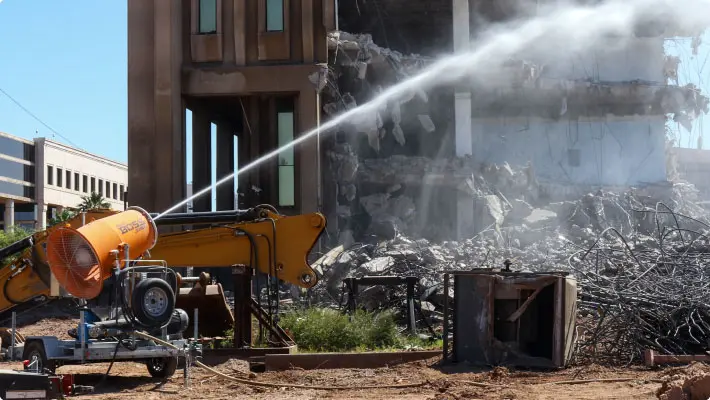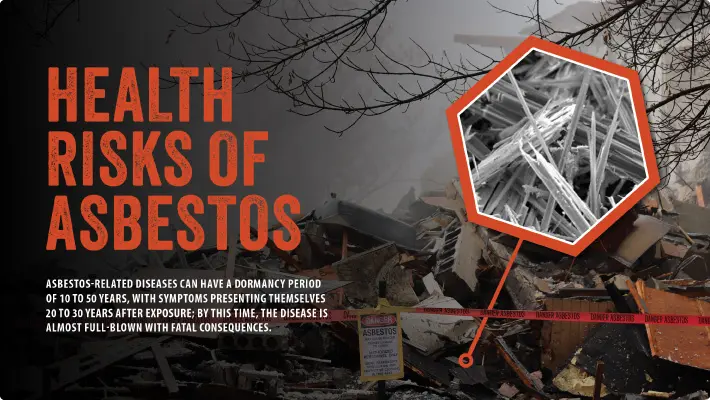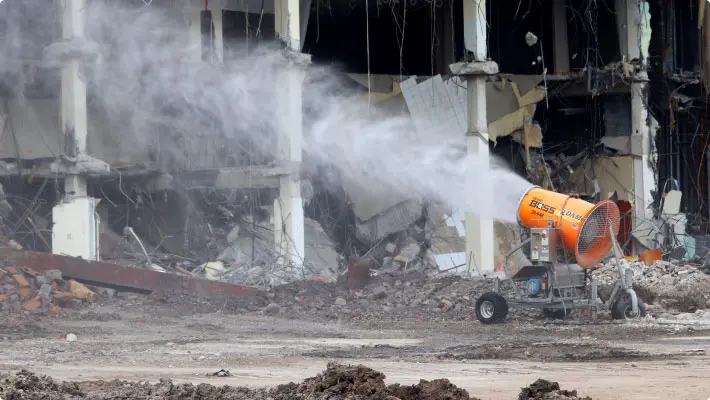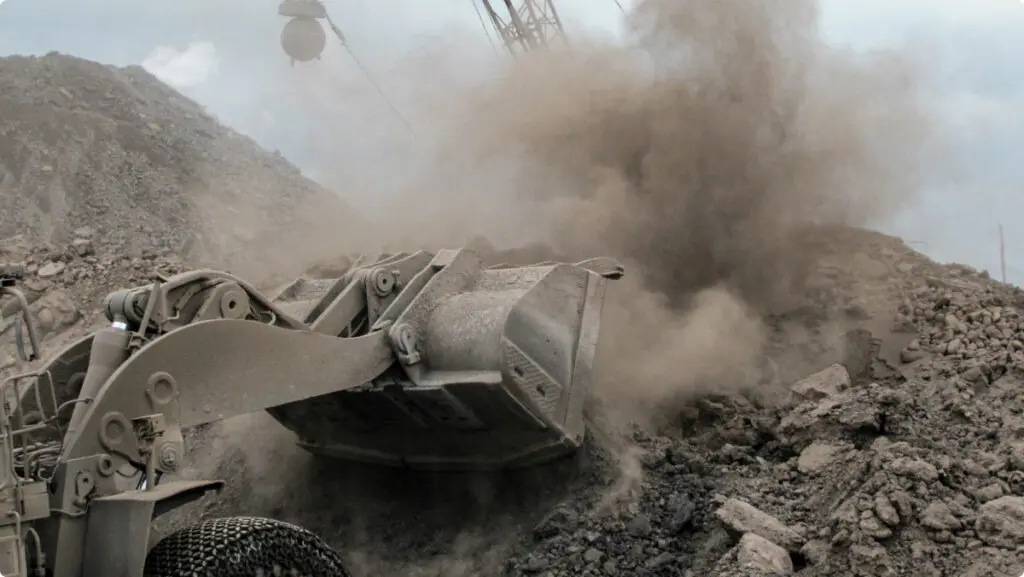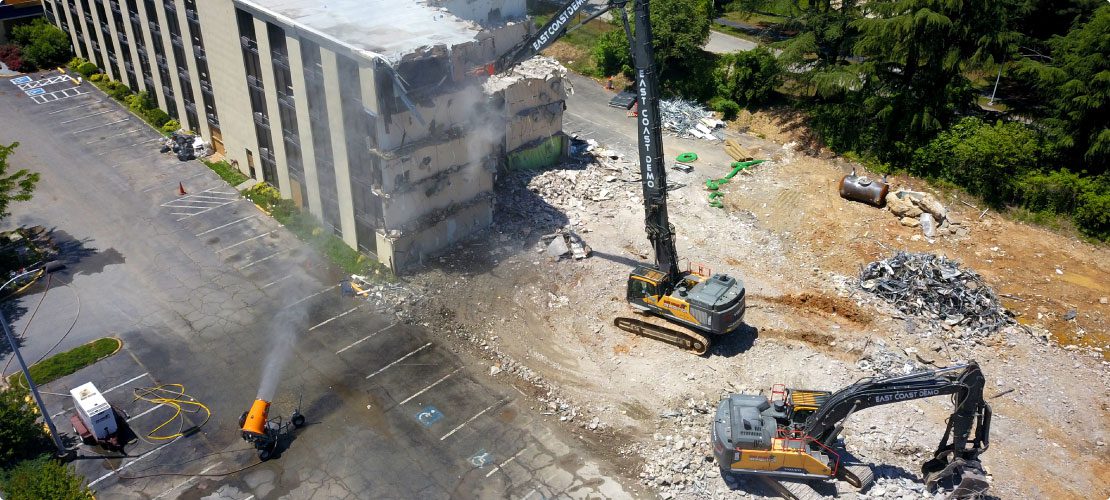

Construction management education in the United States during the twentieth century was fundamentally concerned with new work. This concentration was a logical response to the needs of the industry since the majority of work involved vacant sites and all new construction. In recent years, the construction organizations serving on Purdue University's Department of Building Construction Management's Construction Advisory Council have reported increasing activity that involves work on existing structures or infrastructure.
As the built environment within the United States ages, it is anticipated that opportunities in demolition and reconstruction will continue to expand. In a recent survey of owners responsible for facility construction and maintenance, FMI, a management consulting and investment banking firm to the building and construction industry, and the Construction Management Association of America (CMAA) outlined a set of seven challenges they believe will cause construction markets to change direction in the near future. The first challenge outlined indicated that "Aging infrastructure in nearly every market segment is at or beyond its current useful life, represent(ing) trillions of dollars in necessary spending over the next 10 to 20 years to upgrade and replace these assets" (D'Agostino et al., 2007). These asset upgrades include change in use, upgrade of mechanical or electrical systems, restoration of deteriorated building envelopes, repair of structural damage (or preventative upgrade such as seismic modifications), renovations to reduce serviceability problems, changes to satisfy government mandates, repair of original construction, and corrections to previous renovation errors.
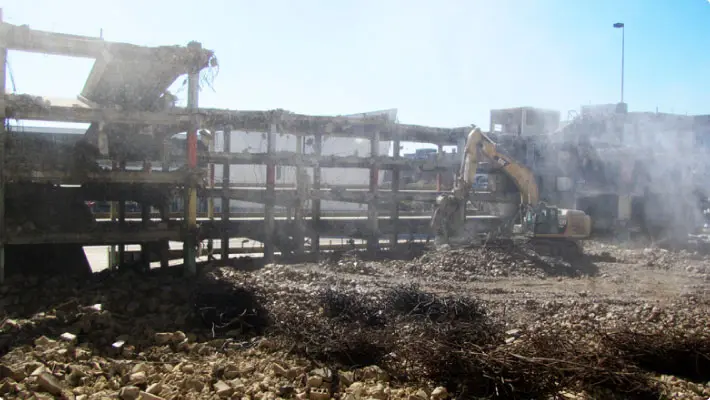
Demolition Site - Peoria, Illinois
The demolition industry through the National Demolition Association (NDA) has also expressed a desire to attract a college educated workforce and to advance professionalism within the demolition industry. It is believed that many misconceptions about the activities of demolition contractors are held by the general public, general contractors, and young construction management professionals. The most frequently cited misconceptions include the belief that demolition contractors primarily "blow-up" buildings, recycle very little, operate unsophisticated businesses, and can successfully complete demolition activities with little knowledge or experience (National Demolition Association, 2007). As a result, the National Demolition Association perceived a need for university construction management programs that include demolition in the undergraduate curriculum. The board of directors of the NDA has expressed a need for courses that will help the general contractors and construction managers of the future better manage the demolition process in addition to providing students with a background appropriate for employment in the demolition industry.
Through the encouragement of the National Demolition Association and the perceived need for an educational offering that includes the special requirements of reconstruction activities of all types, Purdue University has begun the development of a specialization in demolition and reconstruction management. During the development of the first course offerings in this specialization it became apparent that many safety and health issues in demolition and reconstruction should be presented.
DEMOLITION AND RECONSTRUCTION SAFETY
A brief description of demolition and reconstruction safety and health practices not commonly presented in collegiate CM programs follows.
PRE-JOB PLANNING AND HAZARD IDENTIFICATION
An engineering survey conducted by a qualified person is required by OSHA regulation (Occupational and Safety Administration, 2007). This survey allows the demolition contractor to fully evaluate the project, become aware of potential hazards, examine public and employee safety issues, and to collect data for planning the methods and materials to complete the job. Issues such as bracing and shoring, the need for temporary protective structures, dealing with environmental hazards and disposal, utility disconnects, fire protection, first aid services, and project site access are examined in detail during this survey. To appropriately manage the health and safety of their projects, construction managers charged with oversight of demolition activity as part of an overall construction project would be advised to obtain a copy of the demolition contractor's engineering survey and have a working knowledge of checklists used to perform similar surveys.
HANDLING OF HAZARDOUS MATERIAL
One of the most expansive sections of the OSHA safety and health standards deals with the handling of hazardous materials (Occupational and Safety Administration, 2007). The U.S. Environmental Protection Agency (EPA) also has comprehensive regulatory oversight of potentially hazardous materials encountered in demolition and reconstruction activities. Some of the most commonly encountered hazards are asbestos, lead, and Polychlorinated Biphenyls (PCB).
Asbestos Safety. Asbestos has been used extensively in construction. As a result, it is quite likely that it will be encountered during demolition and reconstruction activity. Because of the high potential for damage to the health of employees and the general public when asbestos becomes airborne, handling of this material is broadly regulated (Environmental Protection Agency, 1990). Construction managers should be knowledgeable of the regulations, planning requirements, protective practices, and required disposal procedures for asbestos.
Lead Safety. Lead is well known for use in plumbing and paint materials but is also present in a wide variety of metal alloys encountered in the built environment. Lead is a material that is toxic to the human body and has significant impacts on the nervous system. Lead accumulates in the body, so exposure to even small quantities of lead through inhalation or ingestion will present acute effects through the cumulative effect of constant exposure. Employees should be monitored to assure that their exposure is below OSHA limits. Construction managers should be aware of appropriate work practices to minimize lead exposure, and have sufficient knowledge to monitor the use of personal protective equipment and hygiene practices to prevent lead poisoning.
PCB Safety. PCBs, used in the manufacture of many transformers and capacitors, have been determined to be a potent carcinogen. Although production of PCBs has been banned since 1979, the material is still in service in transformers and capacitors throughout the United States. The material is a potential health hazard to employees involved in demolition and reconstruction. In addition, it is a significant environmental hazard in that spills of PCB-based materials do not break down into harmless materials in the environment. Construction managers should be aware of these hazards and should have knowledge of proper handing and disposal of items containing PCBs.
Hazard Communication. Construction managers need to be aware of the unique material hazards present in demolition. In addition to assuring that the firms engaged in demolition activity on their projects have an appropriate hazard communication program, construction managers need to include these hazards in their own hazard communication program to inform all workers in the vicinity of demolition work of the potential for contact with hazardous material.
See dust control systems protecting against hazardous demolition dust.
PERSONAL PROTECTIVE EQUIPMENT
Although personal protective equipment is not unique to demolition and construction, the nature of the work requires some specialized knowledge to assure proper equipment selection and use. The extensive use of torch cutting requires both proper eye protection and respiratory protection. The release of lead fumes when torch cutting painted steel requires proper respirator selection, medical evaluation of workers who use the respirators, and a respirator maintenance program. Fall protection equipment selection, use, and maintenance are also important components for construction manager knowledge since demolition and reconstruction activity frequently exposes workers to unique height risks. Safety nets, retractable lanyards, full body harnesses, and specialized anchoring systems may be required in addition to provisions for guard rails or other barrier type fall protection.
SAFE USE OF HAND TOOLS
Demolition and reconstruction frequently involves a form of material reuse called soft-stripping or non-structural deconstruction. Soft-stripping refers to the removal of specific building components that are determined to have a significant resale value. These components are removed prior to the demolition of the structure (Dept. of Housing and Urban Development, 2000). Common hand tools and manual labor are required for the removal and refurbishment of these materials. These tools are frequently used in a "forceful" manner, have sharp or abrasive surfaces, and are capable to significant human harm. Care must be taken to avoid the assumption that everyone knows how to use these tools. Construction managers should be able to select appropriate tools for the job, know how to use the tools in a safe manner, and assure that the tools are stored and maintained properly.
SAFE BLASTING PROCEDURES
Although blasting is actually used in a rather small percentage of demolitions (National Demolition Association, 2007), explosives when used require careful planning, preparation, transportation, storage, and disposal. Safe blasting procedures are covered by a relatively large group of OSHA standards (Occupational and Safety Administration, 2007).
SAFETY WHEN WORKING IN CONFINED SPACES
Confined spaces in demolition and reconstruction include storage tanks, vaults, silos, utility tunnels, and vessels where natural movement is restricted, access is limited, and air supply may be limited. In addition, these confined spaces may present flammable, toxic, corrosive, or irritating work environments. Construction managers must be aware of these hazards and appropriate communications, ventilation, monitoring, and rescue planning procedures for work in confined spaces.
SAFE DEMOLITION OF PRE-STRESSED AND POST-TENSIONED CONCRETE
Many modern reinforced concrete structures utilize steel reinforcement placed under tension either during the placement of concrete or immediately after concrete placement. These pre-stressed or post-tensioned structures are now reaching an age where demolition may be required. Since the steel reinforcement is in tension at all times, the demolition process presents the potential for the release of violent or explosive forces. Construction managers should be aware of the potential for this potential forceful release of tension and must assure that appropriate engineering advice and planning is obtained prior to demolition of pre-stressed or post-tensioned concrete.
DEBRIS REMOVAL AND FALLING DEBRIS
Removal of debris is a major component of demolition. The large quantity of material that must be moved from upper floors to the ground level presents the potential for impact damage to structures from falling debris, generation of potentially hazardous dust, danger to workers below debris removal activity from falling items, potentially unsafe cutting of floor openings for debris drop locations, and the improper use of debris chutes. OSHA regulations for demolition provide some guidance for construction managers in oversight of demolition debris removal operations (Occupational and Safety Administration, 2007).
COMPETENT PERSON
OSHA regulation requires that a competent person continuously inspect the progress of a demolition project to detect potential hazards from weakened structures, inadequate shoring, lack of bracing, or other hazards from unexpected conditions (Occupational and Safety Administration, 2007). Since no employee should be allowed to work while an unsafe condition exists, construction managers should be aware of the authorized competent person and recognize that the designated competent person can and will stop work in the event they judge an unsafe condition to exist.
READY FOR A QUOTE?
Talk to a dust control specialist and get a quick quote for your project.
DEMOLITION AND RECONSTRUCTION PUBLIC HEALTH HAZARDS
Demolition and reconstruction activities have a high potential for impact on the health of the general public. These activities are commonly conducted in close proximity to occupied spaces, often in high-density urban settings. Consequently, the public is likely to be exposed to an assortment of dust and debris that results from the dismantling processes. Both airborne and waterborne contaminants released by demolition or reconstruction dismantling have the potential to expose large populations to significant health hazard.
Demolition and reconstruction also produces a significant quantity of debris. Handling and disposal of this debris has the potential to impose both short-term public health exposure and long-term environmental pollution. The following discussion presents a brief description of some of the public health hazards of demolition and reconstruction that construction managers should be aware of.
DUST EXPOSURE
Dust is generated in large quantities during demolition activities. In many cases, dust control is provided by wetting down affected areas with a fire hose. This is an effective method for minimizing the nuisance of dust exposure for surrounding properties in most situations. Unfortunately, some situations can expose special populations, such as the elderly and individuals with compromised immune systems, to health hazards that require greater care.
Histoplasmosis is an infectious disease related to dust control. The disease is caused by spores of a fungus and can create a chronic lung disease that resembles tuberculosis. Although the disease is not contagious and cannot be transmitted from person to person, the spores are frequently found in areas frequented by birds and bats in buildings. Inhaled dust generated by demolition or reconstruction activity can become a vehicle for the transmission of the spores. Demolition workers should exercise care when working around bird or bat droppings. Individuals (especially children) with compromised immune systems are more susceptible to infection, making dust control activity in and around healthcare and childcare facilities of critical importance (Lenhart, et al., 2004). Figure 1 shows the use of dust control equipment that breaks the flow of water into small droplets, better able to capture dust particles and bring them safely to the surface of the ground. Nevertheless, on windy days the competent person assigned to site safety monitoring may need to discontinue operations until the wind subsides and dust control measures can be effective.
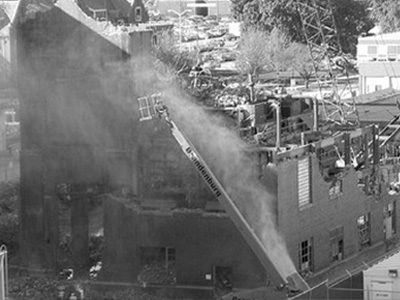
Figure 1: Water droplet dust control
Inadvertent exposures to environmental pathogens such as aspergillus and legionella or airborne pathogens including mycobacterium tuberculosis and varicella-zoster virus can result from dust transfer during demolition and reconstruction activities in occupied health care facilities. Environmental infection-control strategies and airflow controls can effectively prevent these infections. After performing an infection control risk assessment (ICRA), the multi-disciplinary team formed to manage infection control during the construction activity creates a proactive plan of action. Infection-control measures typically include creating a negative air pressure condition within the spaces with undergoing demolition or construction activities (Figure 2) to prevent contaminated air from leaving these spaces through uncontrolled ventilation. Air removal from the construction areas is through HEPA filtration, preferably exhausted to the exterior (Sehulster & Chinn, 2003).

Figure 2: Negative air pressure HEPA filter
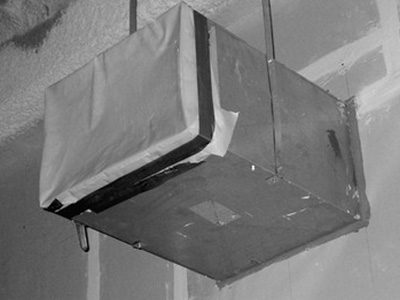
Figure 3: Negative air pressure HEPA filter
Construction activities within a healthcare facility that are limited to a small area may not be confined by partitions that allow large zones of negative air pressure to be created. In these situations it is necessary to enclose a limited space utilizing a containment cart (Figure 4) or plastic film barriers and a HEPA vacuum to create a limited area of negative pressure. These temporary containments can be installed for work requiring as little as an hour or two of construction or repair.
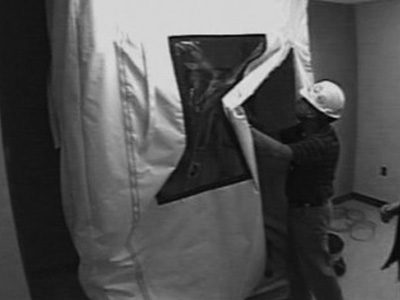
Figure 4: Containment cart
The examples given here demonstrate the need for dust control for infection-control purposes in conditions where severe public health conditions exist and enforcement is common within the facility. It is strongly suggested that similar dust control measures should be considered for any demolition or reconstruction activity within or adjacent to an occupied space. Not only would adoption of these measures prevent the spread of dust borne contaminants, but would minimize the nuisance and disruption created for the occupants.
DEBRIS DISPOSAL
A 1996 estimate concluded that the waste generated by demolition and renovation activities make up 92% of all construction and demolition waste generated in the United States. This represents 124,700,000 tons of debris generated (excluding waste resulting from roadway, bridge, and land clearing operations) or about 2.6 pounds per capita per day (Environmental Protection Agency, 1998). On the assumption that these materials are benign and present little in the way of hazardous material that can be leached into surrounding groundwater, a large quantity of this waste is disposed of in landfills that accept only construction and demolition (C&D) waste with minimal protection for the surrounding groundwater. Unfortunately, products do exist in the demolition waste stream that contains small quantities of material which are hazardous to public health. These materials, when concentrated in a landfill, create a potential for environmental contamination through leaching of the hazards into the groundwater.
Listed below are some of the common products, along with the related hazardous material found in these products, which should be removed from the C&D waste stream through diversion to appropriate recycling programs or properly disposed of in a hazardous waste site:
- Fluorescent Light Bulbs - Mercury
- High Intensity Discharge Lamps - Mercury
- Thermostats - Mercury
- Silent Switches - Mercury
- Lighting Ballasts - PCBs, DHP, & DEHP
- Batteries - Lead, -Mercury, & Cadmium
- Flashing & Pipes - Lead
- Treated Wood - Arsenic
- Refrigerants - CFCs
- Smoke Detectors - Radioactive Materials

Figure 5: Demolition recycling survey results
Although the quantity of debris resulting from demolition activity that is diverted from landfills through recycling has been increasing, a recent survey of demolition contractors (Figure 5) shows that a large percentage of some demolition debris continues to be disposed of in a manner that has the potential to contaminate groundwater surrounding C&D landfills (Shaurette, 2006). One of these materials is wood. Although raw wood products do not contain hazardous material, contaminated wood (exposed to industrial contaminants or oils) and treated wood need greater scrutiny before disposal in a C&D landfill. A recent study of unlined C&D landfills in Florida confirmed that groundwater sampled from the soil surrounding 21 C&D landfills containing CCA-treated wood and CCA-treated wood ash exceeded the 5 mg/L regulatory level for total arsenic leaching. The authors concluded that CCA-treated wood and CCA-treated wood ash should be classified as a hazardous waste (Solo-Gabriele, et al., 2004).
INDUSTRY PARTICIPATION IN DEMOLITION SAFETY STANDARDS AND PRACTICE
Through the work of the membership and board of directors of NDA, the demolition industry has been proactive in the development and dissemination of health and safety training material. In May of 2005, NDA established an alliance with the U.S. Occupational and Safety Administration (OSHA) to jointly develop health and safety curricula, achieve outreach to the industry, and promote a national dialogue within the industry through forums, meetings and case studies. In October of 2007, NDA held its 13th Annual Safety/Management Training Summit, featuring a Demolition-Specific OSHA 10-Hour Training Certification (Clements, 2007).
NDA health and safety publications include, the Demolition Safety Manual, Hazard Communications Program, Demolition Talks, Lead Safety in Construction, Lead in Demolition Work an Employer (Employee) Manual, Demolition Preparatory Operations, Skid Steer Safety Tips, Site Specific Safety Plan Guidelines, as well as checklists for safety meetings, job-site safety hazard assessment, competent person designation, utility disconnect survey and follow-up. Safety videos are also available from NDA for general demolition safety training, lead safety awareness, and safe skid steer operation.
International recognition of the need for health and safety training for demolition is born out in a publication promoting safety training for young workers by the European Agency for Safety and Health at Work, a tripartite organization of European Union governments, employers, and workers representatives organized to promote occupational health and safety. One of the 25 practical examples selected from entries in the 7th annual Good Practice competition to support the dissemination of good practice information in workplaces in the twenty-seven Member States dealt with demolition safety (Kotzabasi, M., 2006).
With the aging of the build environment in the United States, demolition and reconstruction activity will continue to grow. As a result, a greater percentage of construction professionals will include theses activities as construction services they provide. Since demolition and reconstruction activities have unique safety and public health impacts, it is important that current construction management graduates have some exposure to safety practices and appropriate planning procedures required to protect both employees and the general public during demolition and reconstruction. The temptation exists to assume that new construction and reconstruction share sufficient materials and methods to treat them as synonymous in the educational environment. Much of the skill set required to perform the new work required in reconstruction is the same as new construction, nevertheless; the existence of hazardous materials, selective demolition work, frequent close proximity of other structures, and need to work in partially occupied spaces all demand additional safety and public health planning and implementation when dealing with demolition and reconstruction.
Mark Shaurette, Ph.D., Purdue University, 401 N. Grant Street, Room 414, West Lafayette, IN 47907-2021
REFERENCES
Clements, E. (2007). National Demolition Association Safety/Management Training Summit. Press release retrieved on November 23, 2007 from http://www.demolitionassociation.com/press_releases.php
D'Agostino, B., Mikulis, M., & Bridgers, M. (2007). FMI & CMAA Eighth Annual Survey of Owners. Raleigh, NC: FMI
Department of Housing and Urban Development. (2000). A Guide to Deconstruction: An overview of destruction with a focus on community development opportunities. Washington, DC: Office of Policy Development and Research. Retrieved on November 23, 2007 from http://www.huduser.org/publications/destech/decon.html
Environmental Protection Agency. (1998). Characterization of Building-Related Construction and Demolition Debris in the United States. Washington, DC: EPA. Retrieved on November 23, 2007 from www.epa.gov/epaoswer/hazwaste/sqg/c&d-rpt.pdf
Environmental Protection Agency. (1990). Asbestos NESHAP Regulated Asbestos-Containing Materials Guidance. Chicago, IL: EPA Region 5. Retrieved on November 26, 2007 from http://yosemite.epa.gov/r5/r5ard.nsf/2f86cbca09880b61862565fe00588192/5d129f63c7fc077286256fc7006c542a!OpenDocument
Kotzabasi, M. (2006). A Safe Start for Young Workers in Practice. 12, 49-53. Bilbao, Spain: European Agency for Safety and Health at Work. Retrieved on November 23, 2007 from http://osha.europa.eu/publications/reports/GPB06/DemolitionSafety.en
Lenhart, S., Schafer, M., Singal, M., & Hajjeh, R. (2004). Histoplasmosis: Protecting workers at risk. Cincinnati, OH: National Institute for Occupational Safety and Health
National Demolition Association. (2007). 10 Common Misconceptions about the Demolition Industry. Retrieved on November 26, 2007 from http://www.demolitionassociation.com/10_misconceptions.php
Occupational and Safety Administration. (2007). Demolition Standards. Retrieved on November 23, 2007 from http://www.osha.gov/SLTC/constructiondemolition/standards.html
Sehulster, L., & Chinn, R. (2003). Guidelines for Environmental Infection Control in Health-Care Facilities. Atlanta, GA: Centers for Disease Control and Prevention. Retrieved on November 23, 2007 from http://www.cdc.gov/mmwr/preview/mmwrhtml/rr5210a1.htm
RECEIVE A QUOTE AND PROTECT WORKERS TODAY!
Get a quote and talk to a dust control specialist today to provide safety for your workers.
